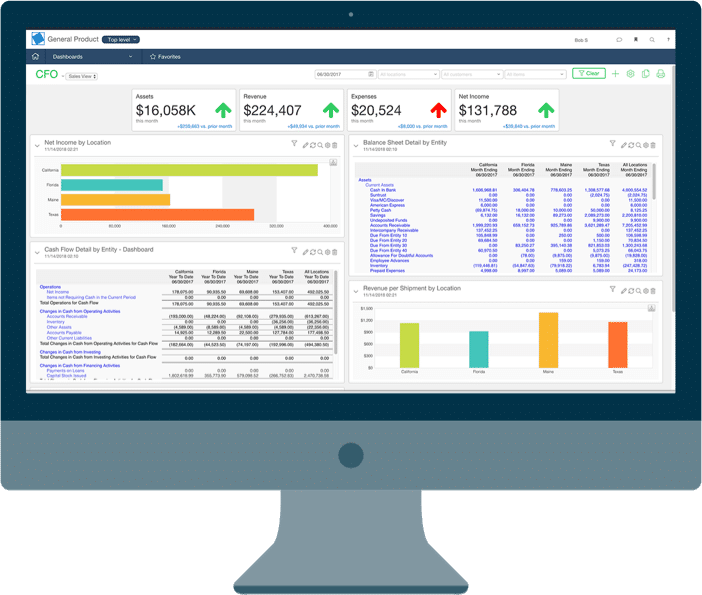ASC 840 (replaced by ASC 842)
ASC 840 refers to the Financial Accounting Standards Board (FASB) Accounting Standards Codification (ASC) Topic 840, and provided guidelines for lessees and lessors to determine how to recognize, measure, and present leases in financial statements. It’s important to note that ASC 840 has been superseded by ASC 842 for public companies and ASC 842 or IFRS 16 for private companies.
Under ASC 840, leases were categorized as either operating leases or capital leases (also known as finance leases), each with distinct accounting treatments:
Operating Leases: Typically, operating leases were treated as off-balance-sheet arrangements. Lease expenses related to operating leases were recognized in the income statement over the lease term, and the related lease obligations were disclosed in the footnotes to the financial statements.
Capital Leases (Finance Leases): Capital leases, on the other hand, were treated as if the lessee had acquired an asset and incurred a liability. The leased asset and the corresponding lease liability were recorded on the balance sheet, and depreciation and interest expenses were recognized over the lease term.
Key considerations under ASC 840 included the determination of whether a lease met certain criteria for classification as a capital lease, such as the transfer of ownership, a bargain purchase option, or a lease term constituting a major part of the economic life of the asset.
Furthermore, ASC 840 required lessees and lessors to make various disclosures in financial statements to provide stakeholders with information about the nature and financial implications of leasing arrangements.
It is important for companies to understand historical leases accounted for under ASC 840, as this knowledge may be relevant for comparison purposes, or for certain non-public companies that have not yet adopted the new lease accounting standards (as of my last update in January ) related. . 2022. However, public companies should move to ASC 842. Please always consult the latest accounting standards and professional guidance for the latest information.


ASC 842
ASC 842 refers to the Financial Accounting Standards Board (FASB) Accounting Standards Codification (ASC) Topic 842, which outlines the new accounting rules and guidelines for reporting leased assets on financial statements. ASC 842 replaces the previous lease accounting standard, ASC 840, and represents a significant shift in how companies account for leases.
Under ASC 842, companies are required to recognize most leases on their balance sheets as both a right-of-use (ROU) asset and a lease liability. This is a departure from the previous practice where certain leases, known as operating leases, were off-balance-sheet. The goal of ASC 842 is to provide more transparency and a clearer representation of a company’s financial obligations related to leasing arrangements.
Key points of ASC 842 include:
Recognition on the Balance Sheet: Lessees are now required to recognize assets and liabilities for all leases with terms longer than 12 months. This includes both finance leases and operating leases.
Separation of Components: For both lessees and lessors, ASC 842 introduces a more detailed analysis of lease components. Certain components, such as variable lease payments and non-lease components, may need to be separated and accounted for differently.
Enhanced Disclosures: ASC 842 introduces additional disclosure requirements to provide financial statement users with more information about a company’s leasing activities. This includes information about the amount, timing, and uncertainty of cash flows arising from leases.
Changes for Lessors: While much of ASC 842 focuses on lessees, it also brings changes for lessors, particularly in the classification and measurement of lease receivables and sales-type leases.
Compliance with ASC 842 requires companies to reassess their lease portfolios, implement new accounting systems and processes, and provide additional disclosures in financial statements. The standard aims to improve the comparability of financial statements among entities and provide a more accurate reflection of a company’s financial position and performance.
Adopting ASC 842 may have significant implications for financial reporting, and companies are encouraged to work closely with their accounting and financial advisors to ensure a smooth transition and ongoing compliance.
AssetAccountant – saving you from spreadsheets since 2019
Difference between ASC 840 and ASC 842
The transition from ASC 840 to ASC 842 represents a substantial shift in lease accounting standards, particularly in how leases are recognized and reported in financial statements.
Here are some of the main differences between ASC 840 and ASC 842:
On-Balance Sheet Recognition:
ASC 840: Operating leases were generally treated as off-balance-sheet items, with lease expenses recognized in the income statement over the lease term.
ASC 842: Requires lessees to recognize most leases on the balance sheet as both a right-of-use (ROU) asset and a lease liability. This applies to both finance leases and operating leases.
Classification of Leases:
ASC 840: Distinguished between operating leases and capital leases based on criteria such as transfer of ownership, bargain purchase options, and lease term.
ASC 842: Retains the distinction between finance leases and operating leases, but the criteria for classification are modified, with a more principles-based approach.
Disclosures:
ASC 840: Required lessees and lessors to disclose certain information in the footnotes to the financial statements.
ASC 842: Introduces enhanced disclosure requirements, providing more comprehensive information about a company’s leasing activities. This includes additional details on the amount, timing, and uncertainty of cash flows arising from leases.
Separation of Components:
ASC 840: Did not explicitly require the separation of lease and non-lease components for lessees.
ASC 842: Introduces a more detailed analysis of lease components, requiring lessees to separate and account for certain components, such as variable lease payments and non-lease components.
Transition Approach:
ASC 840: No specific transition requirements as it was the existing standard.
ASC 842: Involves a transition approach with different practical expedients and options for lessees and lessors. Companies need to reassess existing leases and implement new accounting systems and processes.
Impact on Financial Ratios:
ASC 840: Operating leases kept certain liabilities off the balance sheet, potentially affecting financial ratios.
ASC 842: With most leases now on the balance sheet, there can be a significant impact on financial ratios, such as leverage and return on assets.
Costs and Implementation:
ASC 840: Generally, less complex in terms of implementation.
ASC 842: Involves more comprehensive assessments of lease portfolios, potentially requiring companies to invest in new systems and processes.
The shift from ASC 840 to ASC 842 is aimed at providing a more accurate and transparent representation of a company’s financial position and obligations related to leasing activities.
Businesses transitioning to ASC 842 should carefully consider the implications on financial reporting, disclosures, and internal processes to ensure compliance with the new standard. Consulting with accounting and financial professionals is recommended for a smooth and accurate transition.
We take depreciation and leasing seriously
We undertake detailed modelling of fixed asset depreciation and lease calculation rules for both accounting and tax.
We monitor changes to ATO tax rulings and accounting standards like IAS 16 and IFRS 16 so you don’t have to.
And, of course, we are ISO27001 certified.
Why our clients love AssetAccountant


Fantastic product - has literally saved me hours of work.


Ever wanted the big company fixed asset system without all the clunkiness and overthinking on the part of the software developers (I'm looking at you Thomson Reuters...)? Well then you need AssetAccountant. It provides just the right mix of complex depreciation calculations and beautiful user interface. It's a system designed by accountants and executed perfectly by developers. The integration is seamless with Xero (you can sign into AA with Xero credentials which is awesome if you are already running Xero on your browser) and journaling synchs are very flexible between the two applications. Then there is the price. I challenge you to find a more robust fixed asset system at these price points. Well done AssetAccountant.
You get me.
I now have my big boy jocks back on for fixed asset management....and they fit!









Ready to kick some assets?
- AssetAccountant is fixed asset software that automates fixed asset depreciation & lease accounting and posts their journals to the General Ledger.
- AssetAccountant combines detailed interpretation of Tax and Accounting rules with a modern user interface design, to simplify the process of creating and maintaining your fixed asset register.
- AssetAccountant is sophisticated enough for Wall Street, user-friendly enough for main street.
- AssetAccountant is for worldwide application 🌎













































